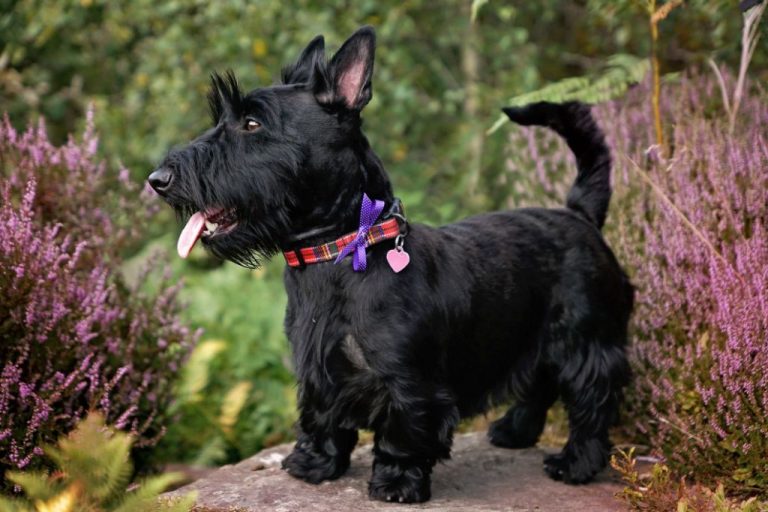Dachshund: Unraveling The Quirks Of This “”Wiener”” Dog

The dachshund, also known as the wiener dog or sausage dog, has a long and interesting history. Originally bred in Germany to hunt badgers and other small prey, these little dogs are known for their long, low bodies and short legs. Though they were initially utilized as hardy hunting companions, today the dachshund is more often found as a family pet and show dog. This breed is known for being lively, alert, and intelligent with an independent streak – some may even say stubborn. They also have some unique physical features and care requirements, as we’ll explore throughout this article.
The origins of the dachshund can be traced back to the 15th century in Germany, where they were developed to hunt prey like badgers in underground tunnels and dens (Technopet). Their short legs and elongated bodies allowed them to easily pursue quarry in burrows. Additionally, their strong sense of smell and tenacity made them ideal hunters. Over time, through careful breeding, dachshunds became the compact yet courageous dogs we know today.
Physical Features
The dachshund has a distinctive long, low profile with short legs. According to The Dapple Dachshund – Complete Dog Breed Guide, the standard dachshund has a body that is long in proportion to its short legs, with a chest that is deep and full.
Dachshunds come in three coat varieties, including smooth, longhaired, and wirehaired, as described in detail by Miniature Dachshund Dog | Sheet, History, Health & Many. The smooth dachshund has a short, shiny coat, while the longhaired variety has slightly longer fur. The wirehaired dachshund has a dense, wiry, short coat.
Dachshunds come in a variety of colors and patterns. According to the AKC breed standard, common coat colors include red (ranging from reddish-brown to a light tan red), cream, chocolate (brown), black and tan, and black and cream. Blue or isabella coloration (like a dilute black) also occurs. Dapples, sables, brindles, and piebalds patterns are also seen.
Temperament
Dachshunds are known for their curious,loyal, stubborn yet independent nature. Despite their small size, they have huge personalities and are not afraid to showcase their various temperamental traits.
Dachshunds form extremely strong bonds with their owners and aim to please. They can be wary of strangers at first but will warm up over time. These dogs are highly intelligent and respond best to positive reinforcement training and lots of treats. However, their independent streak means house training can be challenging. Patience and consistency are key.
The stubbornness of the dachshund is perhaps their most well-known trait. They have minds of their own and will blatantly ignore commands if uninterested. Early socialization and training can curb stubborn tendencies. However, their independence often shines through regardless. Owners must have creative ways to keep these dogs engaged.
Despite their small size, dachshunds are known for being loud and brave. Their loud bark serves as an excellent alarm system. They won’t hesitate to alert owners of anything suspicious, sometimes excessively. Proper training can curb nuisance barking. Dachshunds are always up for an adventure, even if their little legs can’t always keep up.
Common Health Issues
Dachshunds are prone to several health issues, many related to their unique body shape with an elongated spine and short legs. Intervertebral disc disease is one of the most common back problems in the breed, which can cause pain, nerve damage, and paralysis if not treated promptly[1]. Obesity is another major concern, putting excess strain on the back and joints. Patellar luxation, where the kneecap slides out of place, also frequently affects Dachshunds and can lead to osteoarthritis over time.
Due to their long spine, Dachshunds are at particular risk for ruptured or herniated discs in the back. This painful condition, known as intervertebral disc disease, occurs when the discs between the vertebrae bulge or burst and press on the spinal cord and nerves. It often strikes middle-aged Dachshunds suddenly, causing symptoms like unwillingness to jump or use stairs, crying when picked up, and dragging of hind legs. Immediate veterinary care is essential to prevent permanent damage[2].
Preventive measures include discouraging jumping, using ramps instead of stairs, and maintaining a healthy weight. Dogs prone to disc issues may benefit from supplements like glucosamine to support joint health. With diligent care and vet monitoring for early signs of disc problems, Dachshunds can avoid or limit spinal degeneration.
Grooming Needs
Dachshunds have moderate grooming needs. Their coats require regular brushing and occasional bathing to stay clean and prevent mats and tangles.
For coat care, smooth dachshunds need to be brushed once a week, while wirehaired dachshunds require brushing two to three times per week. Longhaired dachshunds need daily brushing to prevent mats from forming. Using a slicker brush and/or comb can help remove loose hair and distribute skin oils.1
Dachshunds should be bathed every three to four weeks, or as needed if they get particularly dirty. Use a mild dog shampoo and thoroughly rinse out all soap residue. Bathing too frequently can dry out their skin. Puppy dachshunds under six months can be bathed once every two weeks.2
Nail trimming is important to prevent overgrown nails that can crack or split. Aim to trim your dachshund’s nails once every two to three weeks. Introduce nail trims slowly with positive reinforcement to make it a pleasant experience.
Dental hygiene is also essential. Brush your dachshund’s teeth two to three times per week to remove tartar and bacteria. Annual professional cleanings at the vet can also help keep their teeth and gums healthy.
Exercise Requirements
Dachshunds have moderate exercise needs. A quick 15-20 minute walk once or twice a day is usually sufficient. However, dachshunds are playful by nature and love to romp around, so providing some active playtime and games can help meet their needs.
Due to their small stature and propensity for weight gain, it’s important not to over-exercise a dachshund, especially while they are puppies. Too much high-impact exercise can put strain on their backs. Low-impact activities like swimming or smell-oriented games are great ways to tire out a dachshund.
On average, a healthy adult dachshund will need 30-60 minutes of exercise per day. Miniature dachshunds tend to need slightly less than standards. As always, adjust according to your individual dog’s age, health, and energy levels.
With their fun-loving and tenacious personality, dachshunds enjoy activities that engage their mind and allow them to put their powerful sense of smell to work. Food puzzle toys, scent training, and hide-and-seek with treats are great indoor exercise options.
Training Tips
Dachshunds respond best to positive reinforcement training techniques that use treats and praise as motivation. However, housebreaking can be challenging with dachshunds due to their independent nature.1 Patience and consistency are key when training a dachshund. Start socialization and training early and use short, engaging training sessions to keep their interest. Be firm but calm when correcting unwanted behaviors. Crate training can help with housebreaking. Overall, dachshunds are clever dogs that need early and ongoing training to learn good manners and respond well to commands.
Ideal Home
Dachshunds can adapt well to apartment living given their small size. Their minimal exercise requirements make them a great choice for those without a backyard.
While dachshunds typically prefer “their people,” they can get along well with older, dog-savvy children. Supervision is still recommended, as dachshunds can be wary of strangers and prone to nipping if provoked.
Due to their loud, deep barks, dachshunds can make excellent watch dogs. Those living in apartments should keep this tendency in mind, as dachshunds will alert you of every passerby.
With proper training and socialization, dachshunds can thrive in a range of living situations. Their adaptable nature makes them a versatile companion.
Fun Facts about Dachshunds
Dachshunds have many quirky and charming fun facts associated with them. Here are some of the most interesting:
Dachshunds were originally bred in Germany hundreds of years ago to hunt badgers and other small prey. Their long, low bodies allowed them to enter underground burrows to chase out foxes and rabbits. https://www.aspcapetinsurance.com/resources/fun-facts-about-dachshunds/
In the early 1900s, Dachshunds gained popularity after being used in “go to ground” hunting trials. Their speed and fearlessness made them excel in these underground racing events.
Dachshunds have been featured in many TV shows and movies, including Toy Story and The Secret Life of Pets. They are a pop culture icon.
A Dachshund named Chanel holds the Guinness World Record for the world’s oldest dog, living to be 21 years old.
Though small, Dachshunds are known for being stubborn and tenacious. They were bred to fearlessly take on animals much larger than themselves!
Conclusion
In conclusion, Dachshunds are quirky little dogs with many unique traits. Their long bodies, short legs, and energetic personalities are hallmarks of the breed. While they make great family pets, Dachshunds do require special care when it comes to housebreaking, grooming, and preventing back problems. Their hunting spirit means they can be vocal and determined, which requires training and patience. But for the right owner, a Dachshund’s devotion, humor and pluckiness make them an unforgettable canine companion.
Despite their small size, Dachshunds have huge hearts and personalities. Their fun-loving nature and affectionate loyalty are big reasons why these little “wiener” dogs have maintained popularity as household pets for centuries. With proper care and training, a Dachshund can be a delightful addition to an active family looking for an entertaining pal.





